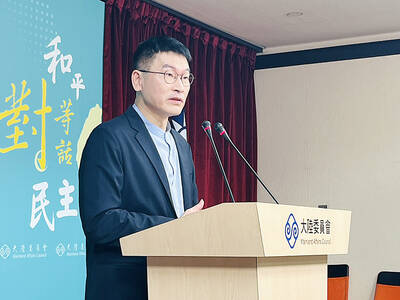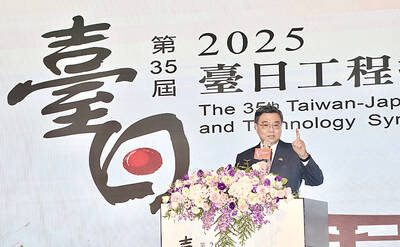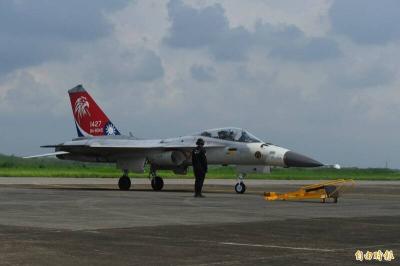President Ma Ying-jeou (馬英九) yesterday said he was confident Beijing had the same understanding of the “1992 consensus” as Taipei, adding that each side — both part of the same “Chinese nation” — had its own interpretation of “one China.”
Ma said he made clear in his inaugural address that his administration would maintain the “status quo” through the “three noes” under the framework of the Republic of China (ROC) Constitution and develop cross-strait relations on the basis of the “1992 consensus.”
The “three noes” refer to no discussion of unification with Beijing during Ma’s presidency, no pursuit of, or support for, de jure Taiwanese independence and no use of force to resolve cross-strait disputes.
Ma said the “1992 consensus” was an agreement reached by both sides in 1992 and Taiwan’s understanding was that each side had its own interpretation of what “one China” signifies.
“Recently, some representatives from the mainland Chinese authorities mentioned this consensus when they were here,” Ma said. “I believe their understanding is consistent with ours.”
However, on Feb. 21, 2006, then-Chinese Nationalist Party (KMT) legislator Su Chi (蘇起) admitted that he made up the term “1992 consensus” in 2000 when he was Mainland Affairs Council chairman. Su said he invented the term to break the cross-strait deadlock and alleviate tension before the KMT handed over power to the Democratic Progressive Party (DPP).
Ma said Taiwan and China had signed 14 agreements over the past two years “as a result of the consensus,” something he said had been a “rare occurrence” over the past 60 years.
“Both sides realize this is a historic juncture and should grasp the opportunity to improve bilateral ties as cross-strait detente is conducive to peace not only across the Taiwan Strait but also in East Asia and the whole world,” he said at the Presidential Office during a meeting with participants in an international forum on the People’s Liberation Army.
Some people recently proposed that Taipei and Beijing consider establishing a confidence-building mechanism (CBM), Ma said, but the Economic Cooperation Framework Agreement (ECFA) signed in June was a kind of CBM, because without mutual trust, both sides would not have signed such a complicated trade pact that requires both sides to commit to a long-term relationship.
Ma said his conciliatory approach was intended to ease cross-strait tensions so that Taiwan would have more time to respond to and become more capable of handling crises.
Taiwan must strengthen its defense capabilities, but it cannot afford to engage in an arms race with China, he said.
His administration would continue to purchase defensive weapons from the US that Taiwan cannot produce itself, but military hardware was not the only way to protect Taiwan, he said. This was why his administration has tried so hard to pursue economic and cultural exchanges with China, he said.
His cross-strait policy has -reduced tension across the Taiwan Strait and both sides have developed a certain degree of mutual trust, Ma said, adding that he hoped both sides would find the best solution to cross-strait disputes “under the guidance of Chinese culture” because both peoples are of one “Chinese nation” and all yan huang zisun (descendants of emperors Yan and Huang).
Ma sought to clarify his remarks about one “Chinese nation” later in the day, saying there were three common characteristics to the “Chinese nation”: They have the same ancestors and the same last names, come from the same towns and villages and go to the same schools.
ADDITIONAL REPORTING BY STAFF WRITER

LOW RISK: Most nations do not extradite people accused of political crimes, and the UN says extradition can only happen if the act is a crime in both countries, an official said China yesterday issued wanted notices for two Taiwanese influencers, accusing them of committing “separatist acts” by criticizing Beijing, amid broadening concerns over China’s state-directed transnational repression. The Quanzhou Public Security Bureau in a notice posted online said police are offering a reward of up to 25,000 yuan (US$3,523) for information that could contribute to the investigation or apprehension of pro-Taiwanese independence YouTuber Wen Tzu-yu (溫子渝),who is known as Pa Chiung (八炯) online, and rapper Chen Po-yuan (陳柏源). Wen and Chen are suspected of spreading content that supported secession from China, slandered Chinese policies that benefit Taiwanese and discrimination against Chinese spouses of

ALIGNED THINKING: Taiwan and Japan have a mutual interest in trade, culture and engineering, and can work together for stability, Cho Jung-tai said Taiwan and Japan are two like-minded countries willing to work together to form a “safety barrier” in the Indo-Pacific region, Premier Cho Jung-tai (卓榮泰) yesterday said at the opening ceremony of the 35th Taiwan-Japan Modern Engineering and Technology Symposium in Taipei. Taiwan and Japan are close geographically and closer emotionally, he added. Citing the overflowing of a barrier lake in the Mataian River (馬太鞍溪) in September, Cho said the submersible water level sensors given by Japan during the disaster helped Taiwan monitor the lake’s water levels more accurately. Japan also provided a lot of vaccines early in the outbreak of the COVID-19 pandemic,

PROMOTION: Travelers who want a free stopover must book their flights with designated travel agents, such as Lion Travel, Holiday Tours, Cola Tour and Life Tours Air Canada yesterday said it is offering Taiwanese travelers who are headed to North America free stopovers if they transit though airports in Japan and South Korea. The promotion was launched in response to a potential rise in demand for flights to North America in June and July next year, when the US, Canada and Mexico are scheduled to jointly host the FIFA World Cup, Air Canada said. Air Canada offers services to 13 of the 16 host cities of the tournament’s soccer games, including Toronto and Vancouver; Mexico City, Guadalajara and Monterrey in Mexico; Atlanta, Georgia; Boston; Dallas; Houston;

The US approved the possible sale to Taiwan of fighter jet spare and repair parts for US$330 million, the Pentagon said late yesterday, marking the first such potential transaction since US President Donald Trump took office in January. "The proposed sale will improve the recipient's capability to meet current and future threats by maintaining the operational readiness of the recipient's fleet of F-16, C-130," and other aircraft, the Pentagon said in a statement. Trump previously said that Chinese President Xi Jinping (習近平) has told him he would not invade Taiwan while the Republican leader is in office. The announcement of the possible arms